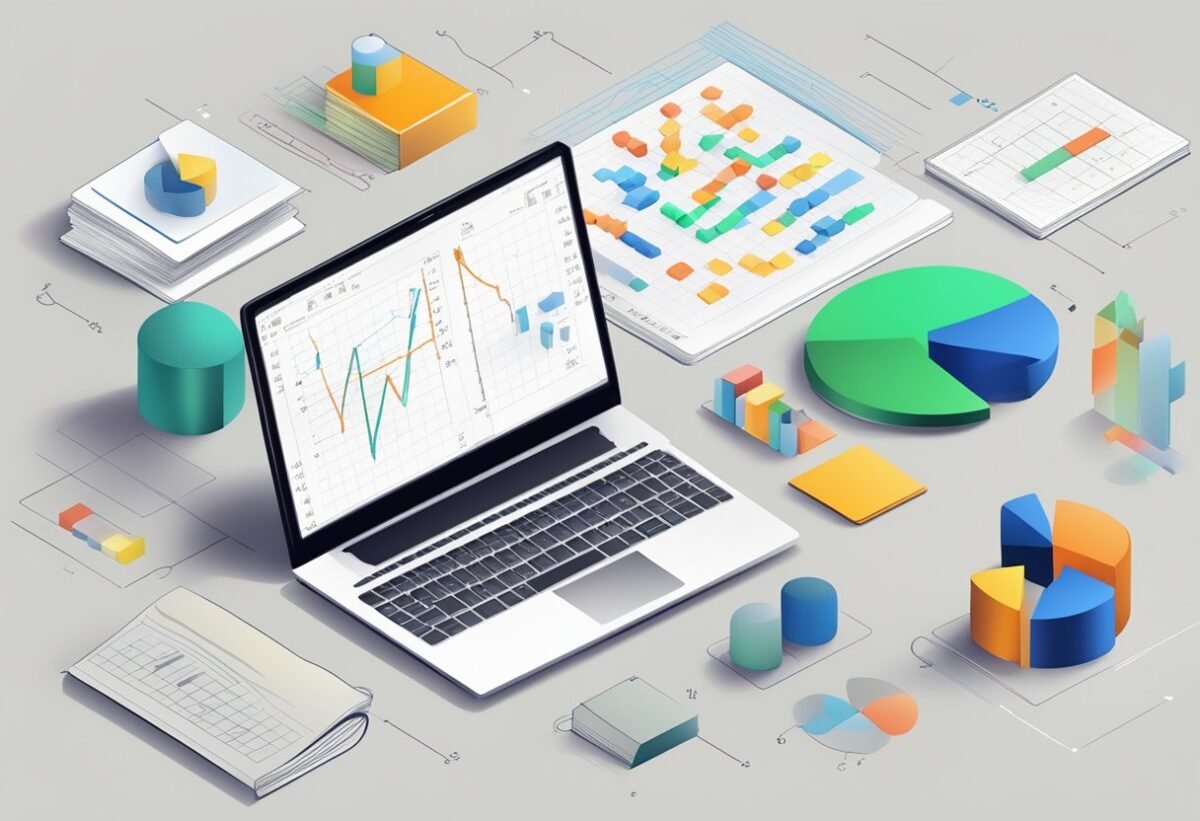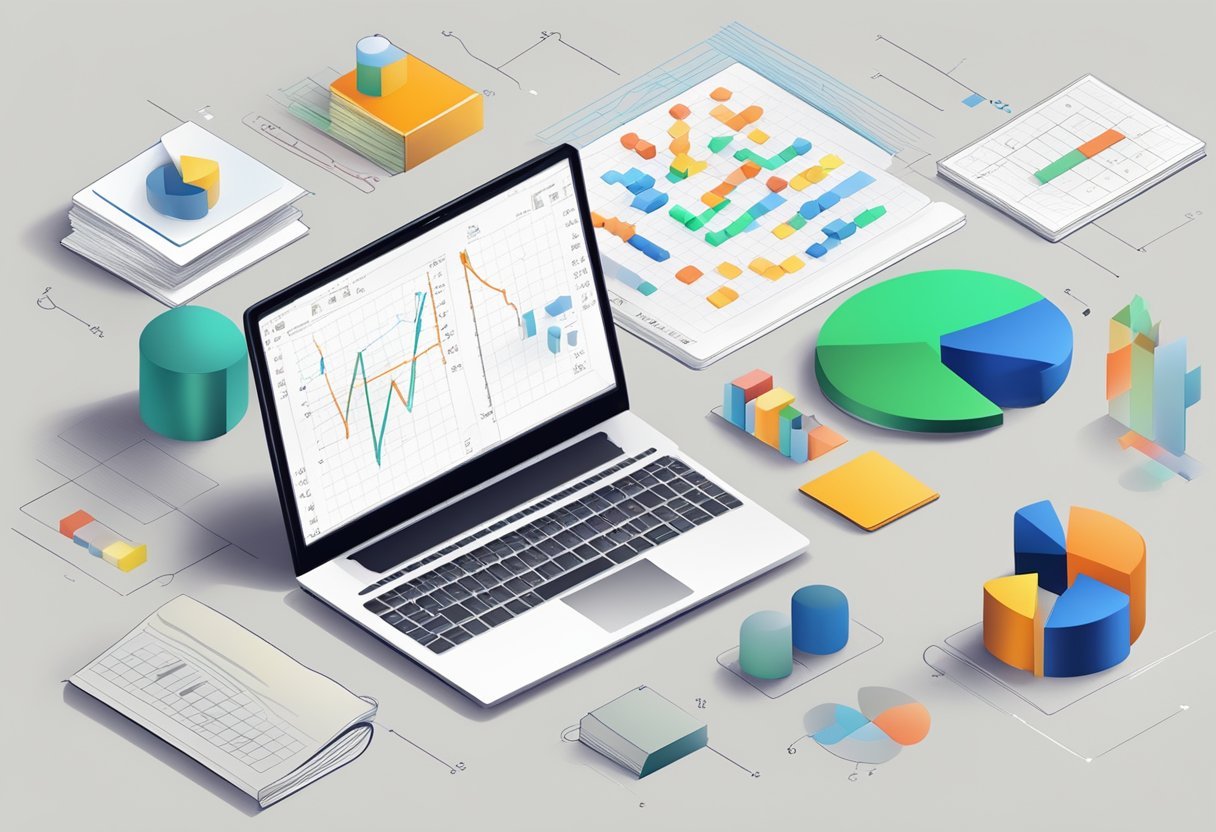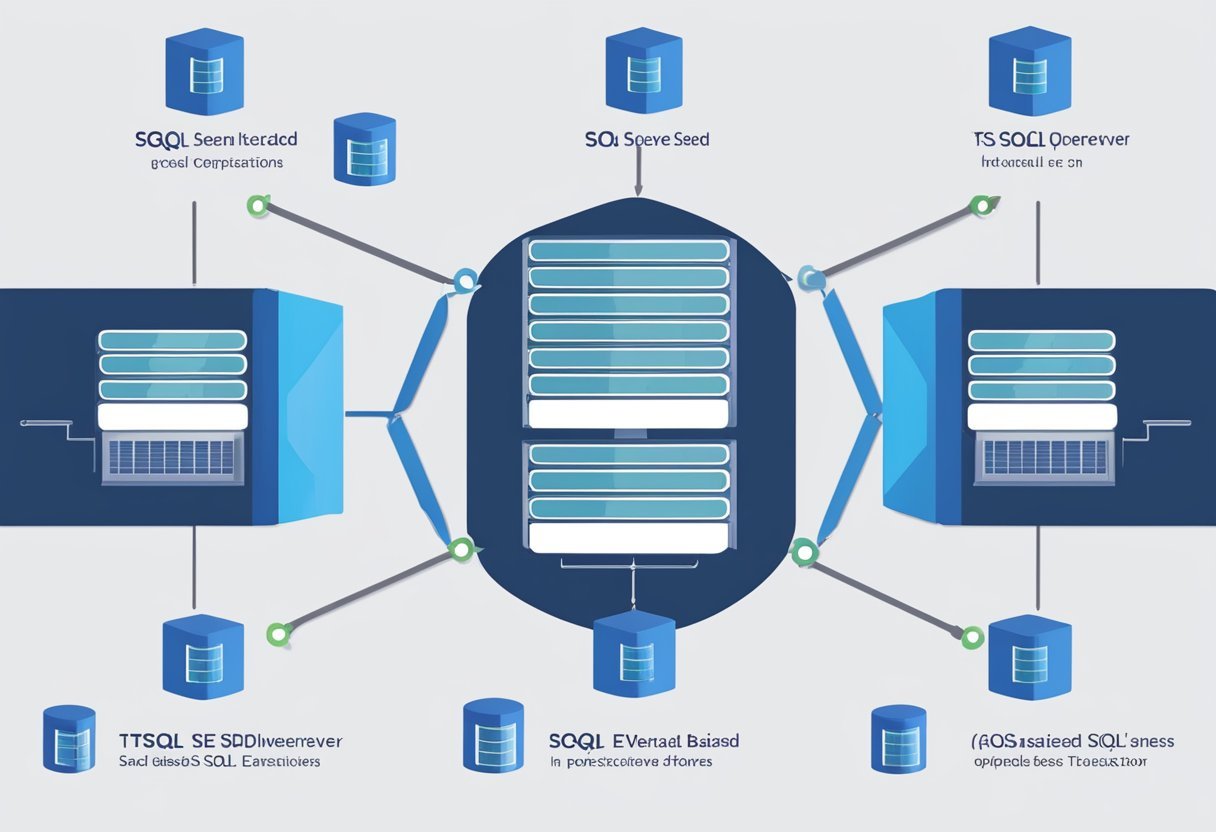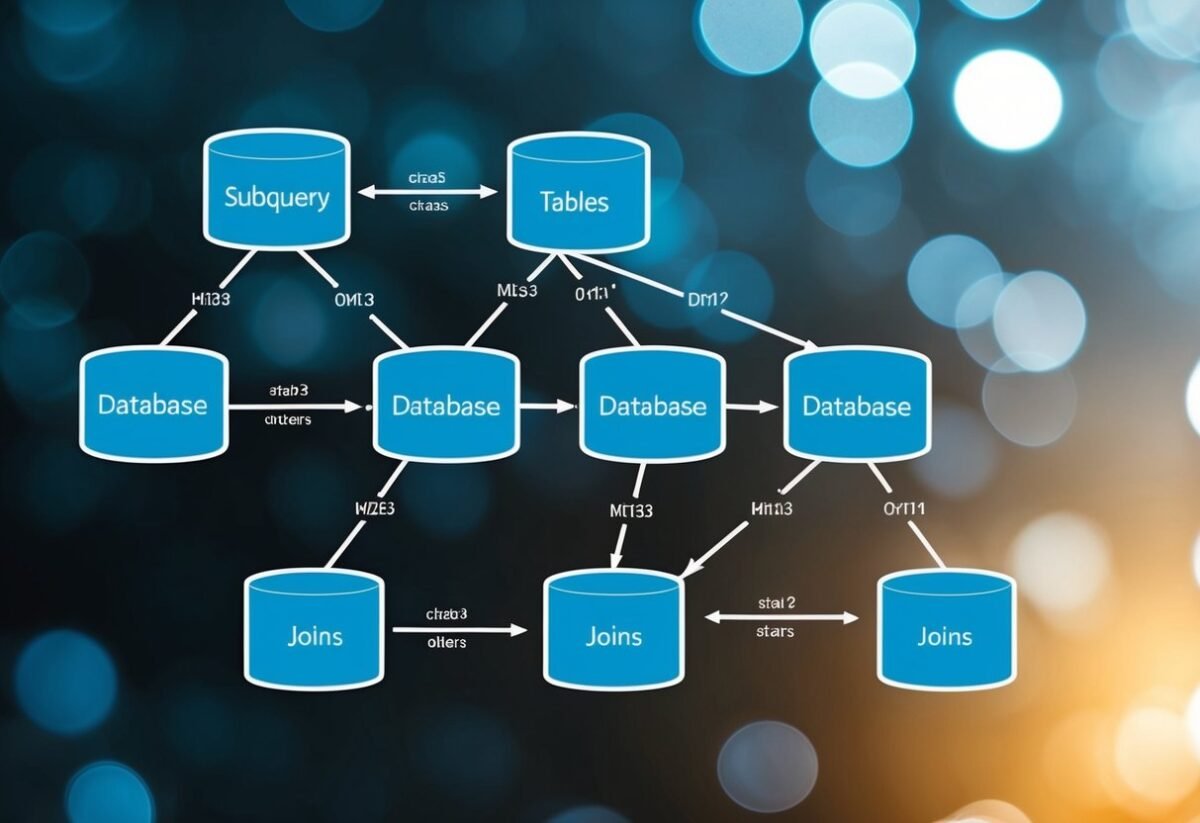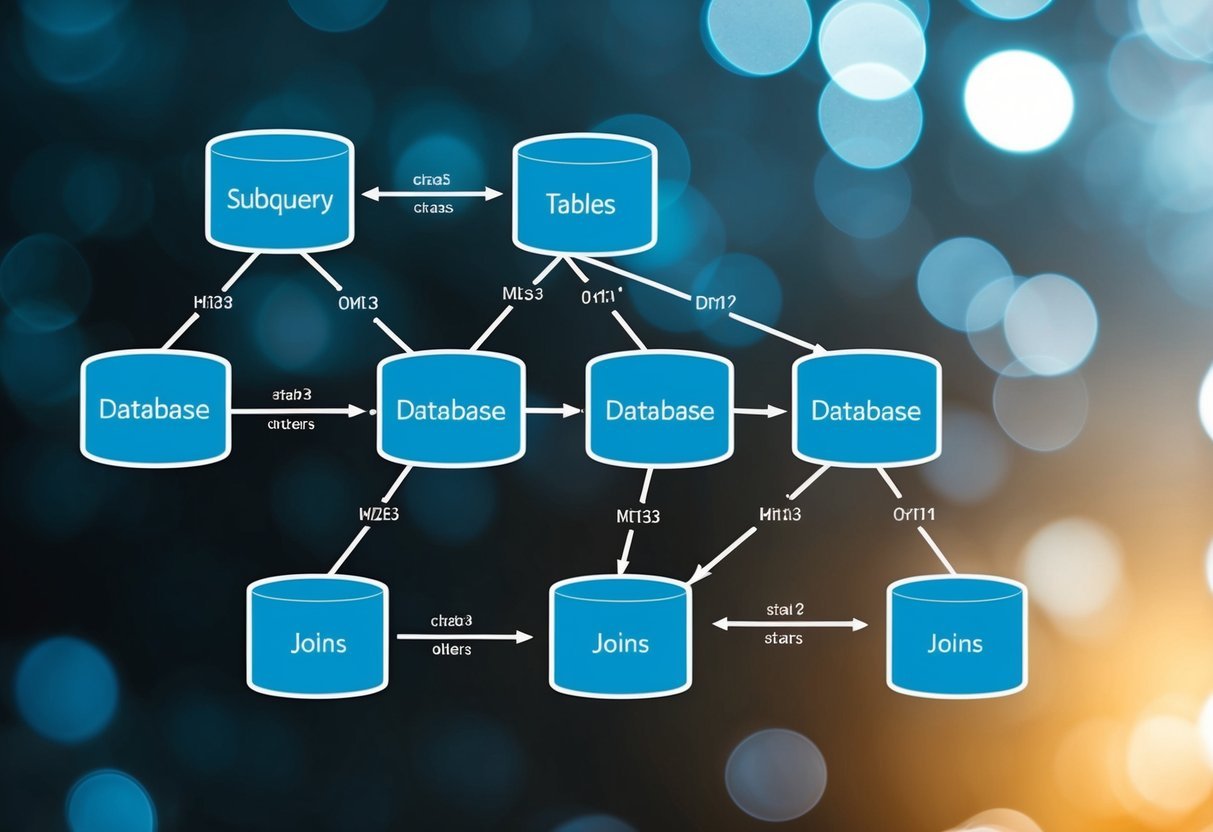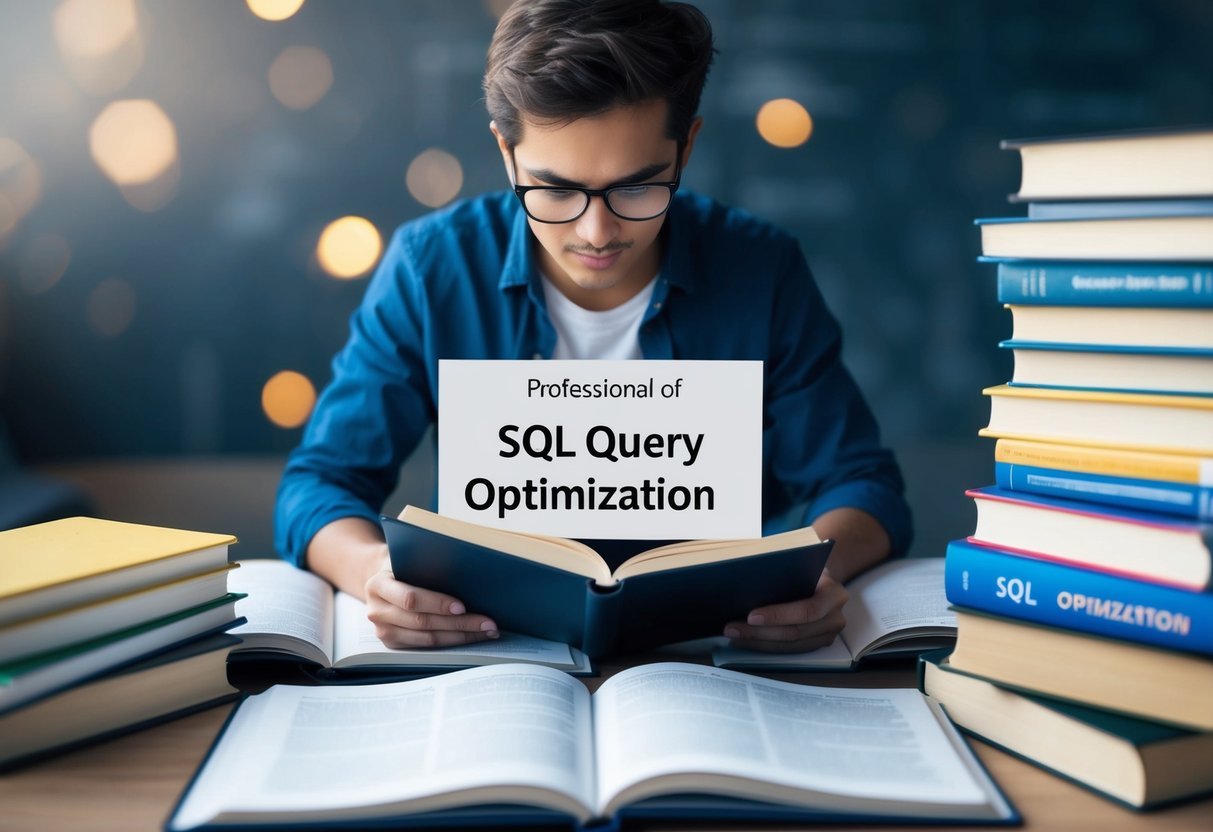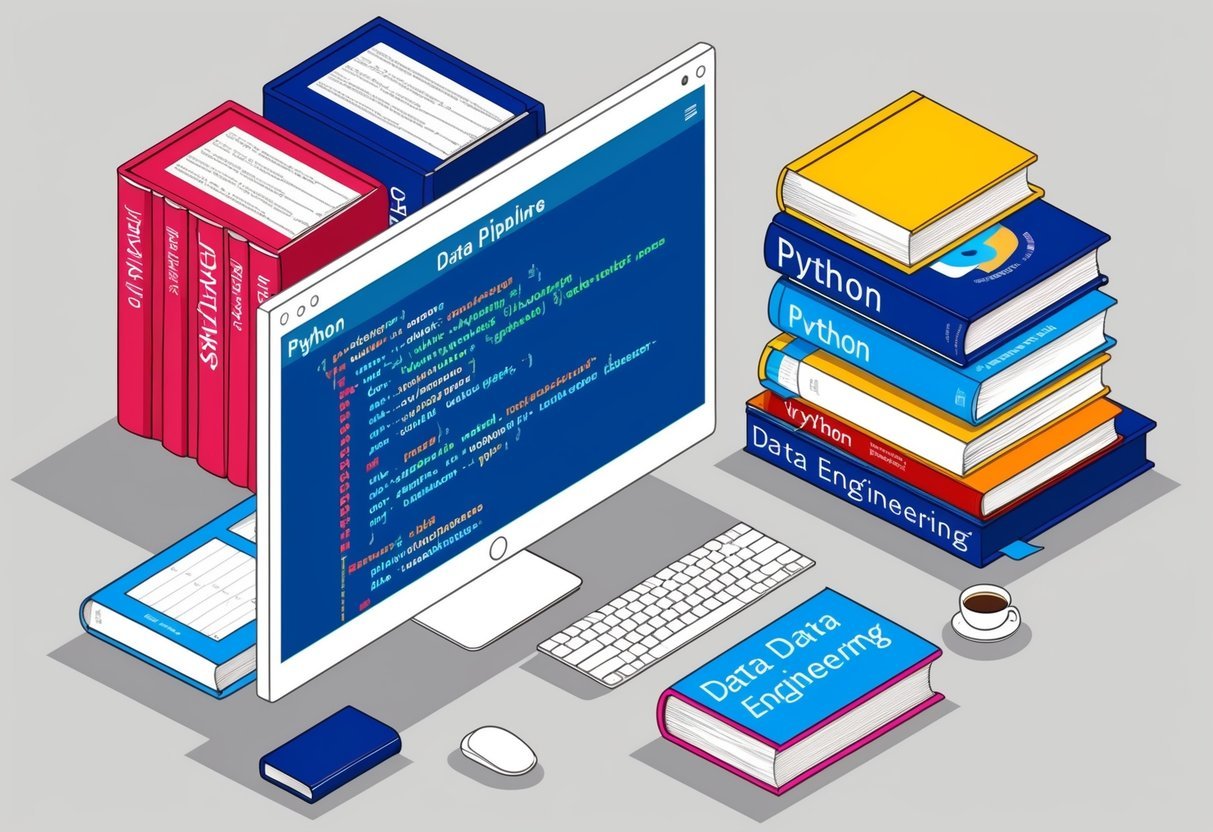Database normalization plays a crucial role in the effective design of relational databases.
It involves organizing data to reduce redundancy and improve data integrity.
By structuring data into normalized tables, databases become more efficient and easier to manage.
This process not only optimizes data storage but also enhances performance and reliability.

Effective database design goes beyond just storage efficiency. Proper normalization ensures that databases handle changes and updates smoothly, minimizing the risks of anomalies.
Such techniques contribute to a robust system, allowing businesses to adapt to evolving data requirements with ease.
Understanding the importance of normalization in database design is key for anyone working with database systems.
This knowledge helps in maintaining data accuracy and consistency, which are critical for any data-driven application.
Exploring these concepts provides insights into how databases maintain stability and optimize performance.
Key Takeaways
- Normalized databases reduce data redundancy and improve integrity.
- Design focuses on smooth data management and adapts to changes.
- Maintaining data accuracy is vital for effective database systems.
Understanding Database Normalization
Database normalization is a key aspect of database design that aims to optimize data storage and maintain data integrity.
This method minimizes data redundancy and eliminates anomalies, ensuring that databases function efficiently.
Definition and Importance of Normalization
Normalization in databases refers to the process of organizing data to minimize redundancy.
It involves dividing a large table into smaller tables and defining relationships among them.
This process improves data integrity and reduces data anomalies such as insertion, update, and deletion errors.
For example, database normalization divides larger tables into smaller ones, which are then linked using relationships.
This not only streamlines data structure but also enhances data consistency across different tables in the database.
Establishing normal forms is a crucial aspect of normalization, where each form addresses specific types of redundancies and dependencies.
The first normal form (1NF) ensures all entries are atomic, while the second (2NF) and third normal forms (3NF) eliminate partial and transitive dependencies.
These steps collectively contribute to improved query performance and easier maintenance, making normalization an important part of database management.
History and Evolution of Normalization
The concept of normalization was introduced by Edgar F. Codd in the 1970s.
His initial goal was to develop a robust framework that leveraged set theory and first-order predicate logic to handle data efficiently.
The original idea led to formally defining the normal forms, beginning with 1NF and extending through more complex forms such as 3NF, Boyce-Codd Normal Form (BCNF), and further.
These normal forms were designed to address specific types of data anomalies and redundancies.
The evolution continued as database systems evolved, addressing various practical challenges in data storage and retrieval.
The ongoing development of normalization techniques continues to play a vital role in modern database systems, ensuring consistency and integrity in increasingly complex datasets.
Fundamentals of Database Design
Database design is crucial in organizing and managing data efficiently. It focuses on creating a structured and logical framework that ensures data integrity and minimizes redundancy.
Design Objectives
The primary objective of database design is to develop a system that handles data efficiently.
It ensures that data is consistent and accurate by minimizing redundancy.
By using techniques like normalization, designers aim to organize data into tables where each piece of data appears only once.
This process reduces the risk of errors and anomalies.
The use of functional dependencies and primary keys is essential.
Functional dependencies define relationships between attributes, ensuring that one attribute’s value determines another.
Primary keys uniquely identify each record in a table, making data retrieval precise and efficient.
Conceptual Database Design
Conceptual database design involves creating a high-level model of the database.
This model focuses on defining the entities, attributes, and relationships within the database.
In a relational database, entities represent real-world objects or concepts, attributes describe properties of entities, and relationships denote connections between entities.
A well-defined conceptual design guides the logical structuring of data.
It helps in identifying the essential elements needed for the database and how they interact.
This phase ensures that all necessary data is captured accurately, providing a clear and organized perspective on the data structure.
Effective conceptual design facilitates communication between stakeholders.
It provides a blueprint for building a robust and scalable database system that meets business needs and adapts to changes over time.
Keys and Functional Dependencies
Keys and functional dependencies form the backbone of effective database design. Keys like primary, candidate, and foreign keys play distinct roles, ensuring uniqueness and relationships in data. Functional dependencies help in understanding how attributes relate to one another and are crucial for organizing database schemas.
Primary, Candidate, and Foreign Keys
In databases, a primary key is a unique identifier for records within a table.
Each table has one primary key made up of one or more columns. This ensures that no two rows have the same primary key value, maintaining data integrity.
A candidate key is any column or combination of columns that can serve as a primary key. Unlike primary keys, a table can have multiple candidate keys, but only one is chosen as the primary key.
A superkey is any set of attributes that can uniquely identify rows, and a candidate key is the minimal superkey.
A foreign key is a field in one table that links to the primary key of another table. This creates a relationship between the tables, establishing links between data stored across different structures.
Composite keys are made of two or more columns when a single column is not sufficient to uniquely identify entries.
Understanding Functional Dependencies
Functional dependencies describe relationships between attributes within a database.
If column A functionally determines column B, then the value of A uniquely determines the value of B.
This concept is vital for database normalization, which reduces redundancy and improves data integrity.
A non-trivial functional dependency occurs when the dependent attribute does not overlap with the determining attribute.
This type of dependency highlights more complex relationships that help refine database schema design.
Understanding these dependencies allows for the identification of keys and helps maintain consistency within the database structure.
Effective use of these dependencies ensures efficient and logical organization of data.
Normal Forms and Data Anomalies
Normal forms are critical in database design to minimize data anomalies and ensure consistency. These forms build on each other, from the first to the sixth, each with specific rules and purposes. Understanding these helps in creating efficient databases.
First to Third Normal Forms
The First Normal Form (1NF) eliminates repeating groups and ensures each column has atomic values. This step prevents data from becoming slow and disorganized, ensuring each table has only one type of data per column.
Moving to the Second Normal Form (2NF), a table must be in 1NF and all non-key attributes should depend entirely on the primary key. This helps eliminate update anomalies by ensuring related data is stored together.
The Third Normal Form (3NF) further refines 2NF by requiring the removal of transitive dependencies.
All data should depend solely on the primary key, reducing insert and delete anomalies and ensuring data consistency.
Advanced Normal Forms: BCNF to 6NF
Boyce-Codd Normal Form (BCNF), also called 3.5NF, handles cases where there is more than one candidate key.
It solves specific anomalies not addressed by 3NF by ensuring every determinant is a candidate key, improving query performance.
Fourth Normal Form (4NF) deals with multivalued dependencies, ensuring tables have no more than one independent multi-valued data set. This reduces redundancy in large datasets.
Fifth Normal Form (5NF), or Projection-Join Normal Form, eliminates join dependencies, meaning it’s decomposed to ensure all join operations are lossless.
Lastly, Sixth Normal Form (6NF) ensures that databases are optimized for particular queries and systems, although rarely implemented, it improves system performance in extremely complex databases.
These normal forms, from the foundational 1NF to the advanced 6NF, play pivotal roles in maintaining robust database design.
Relational Database Management System (RDBMS)

RDBMS plays a critical role in effective data management, optimizing how data is organized and accessed. It ensures data is efficiently stored and easily retrieved, aligning perfectly with the benefits of normalized database design.
Overview of RDBMS
A Relational Database Management System (RDBMS) is a software that facilitates the creation, organization, management, and querying of relational databases.
It uses a structured format to store data in rows and columns within tables, allowing for efficient data management and retrieval.
Popular examples include MySQL, Microsoft SQL Server, and PostgreSQL.
RDBMS employs the SQL language for database access and manipulation.
These systems are essential for ensuring data is consistent and integral across multiple tables through the use of primary and foreign keys.
Database administrators often utilize RDBMS to manage data efficiently, providing tools for data scalability, backup, and recovery.
Role in Normalized Database Design
An RDBMS supports normalized database design by reducing data redundancy and enhancing data integrity.
Normalization involves organizing data to minimize duplication and dependency, which is a primary function of an RDBMS in database architecture.
By dividing a database into multiple related tables, an RDBMS helps maintain data consistency and avoids anomalies during data operations.
This structure is pivotal for managing complex databases where different data types are involved, ensuring that updates in one table automatically reflect across related tables.
This systematic approach of using an RDBMS in normalization facilitates efficient data management, making it easier for applications to ensure data reliability and performance at various scales.
Types of Dependencies in Normalization

Database normalization involves organizing tables to minimize redundancy and avoid undesirable dependencies. Two key types of dependencies, partial and transitive, impact the efficiency and consistency of databases.
Partial Dependencies
Partial dependencies occur in a table when a non-prime attribute is dependent on a part of a candidate key rather than the whole key.
This typically arises in a table that is in the first normal form (1NF) but not in the second normal form (2NF).
To eliminate partial dependencies, the table must be restructured so that non-prime attributes relate only to candidate keys entirely.
This step reduces data redundancy and the likelihood of update anomalies.
In practice, addressing partial dependencies involves identifying composite keys and ensuring attributes depend entirely on these keys.
Once removed, the table enters the second normal form, which results in a more efficient database design.
More efficient table structures improve data accuracy and reduce duplication.
Transitive Dependencies
A transitive dependency exists when a non-key attribute depends on another non-key attribute rather than directly on the primary key.
This situation often appears in tables that are in the second normal form (2NF) but not the third normal form (3NF).
Eliminating transitive dependencies involves decomposing tables so that non-key attributes only depend on primary keys.
Resolving transitive dependencies ensures that information is directly linked to the primary key, leading to fewer data anomalies.
This also assists in maintaining data integrity and ensures easier updates as changes to one attribute no longer impact unrelated data.
Achieving this typically involves better structuring to fit the third normal form, making the database more flexible.
Normalization Techniques and Strategies

Normalization is essential to designing efficient databases. It involves organizing data to reduce redundancy and improve data integrity. This section explores the process of normalization and strategies to effectively implement it.
The Process of Normalization
The process of normalization involves structuring a database into different normal forms, each reducing data redundancy and addressing anomalies.
It starts with the first normal form (1NF), ensuring every database field contains only atomic values, meaning no multiple values in a single field. This helps eliminate duplicate data.
The second normal form (2NF) focuses on eliminating partial dependency, where non-key attributes depend on part of a composite primary key. The aim is to ensure each piece of data is stored only once.
The third normal form (3NF) takes this further by ensuring all fields depend directly on the primary key, not indirectly through another field.
Strategies for Effective Normalization
Effective strategies in normalization aim at achieving a balance between reducing redundancy and maintaining database performance.
One approach is to regularly review and normalize a database as data requirements evolve. It is crucial to understand the specific needs of the database.
Use tools to analyze data relationships and dependencies for optimizing the design.
Developers should be cautious not to over-normalize, which can lead to performance issues.
Deciding when to incorporate a composite primary key is critical, as it can affect data integrity and retrieval speed.
By implementing these strategies, databases can perform efficiently while maintaining data integrity.
Data Integrity and Consistency

Ensuring data integrity and maintaining data consistency are vital in database design. These concepts help prevent errors and improve accuracy, especially when systems scale up and complex data sets are involved.
Addressing these aspects can greatly enhance both the reliability and performance of a database.
Ensuring Data Integrity
Data integrity refers to the accuracy and reliability of data throughout its lifecycle. In database design, it ensures that data remains correct and unaltered.
Normalization plays a crucial role in this by minimizing data redundancy and avoiding anomalies that can occur during insertions, updates, or deletions.
Designers achieve data integrity by using primary keys, foreign keys, and constraints. These elements ensure that relationships between data entities are maintained and that the data adheres to defined formats and rules.
Using normalization techniques maintains the atomicity of values, which helps in ensuring that each data piece is singular and indivisible, thus preventing anomalies.
Maintaining Data Consistency
Data consistency involves ensuring that data is the same across all instances in a database. This means having uniformity in data formats, values, and transaction processes.
Ensuring atomic values, where each data point is unique and effort is made to prevent duplications, helps maintain consistency.
Methods like ensuring all transactional data complies with ACID properties (Atomicity, Consistency, Isolation, Durability) are essential for consistency. These properties make sure that even system failures don’t compromise data accuracy.
With techniques like normalization, inconsistencies are reduced, eliminating contradictions or discrepancies from different data versions. This process also enhances data accuracy, making management simpler and more efficient.
Performance and Storage Optimization

Effective database management balances performance and storage space. Normalization is essential for structuring data but can influence query performance and handling of update anomalies.
Optimizing storage involves techniques to reduce space usage while maintaining data integrity.
Normalization Impact on Performance
Normalization reduces data redundancy by splitting data into multiple tables. This structure ensures data integrity and prevents update anomalies, where changes in one table might require updates in others.
However, highly normalized databases might experience slower query performance due to the need for complex joins across tables.
For example, when data is spread across various tables, a query may need to retrieve information from each one, affecting speed.
Database designers must consider the balance between normalization and performance, as the goal is to maintain data accuracy without compromising efficiency. Indexing is often used to boost query performance, even in normalized environments.
Optimizing Storage Space
Optimizing storage space involves techniques that make efficient use of storage without sacrificing database integrity.
This includes choosing appropriate data types for each field and using compression techniques.
Data archiving old records can also help, ensuring that the primary database only handles current, relevant data.
Storage optimization might involve denormalization, where some redundancy is allowed to improve query speed.
A common trade-off in dealing with storage versus performance is ensuring that necessary data is accessible without excessive resource use.
These strategies must be carefully aligned with the database’s goals to avoid unnecessary complications.
Challenges and Considerations in Normalization

Normalization in database design is vital for organizing data efficiently. Yet, it can bring certain challenges. These include balancing the complexity of queries with performance needs and handling data anomalies like update, deletion, and insertion anomalies.
Balancing Normalization and Performance
When normalizing a database, one must consider the trade-off between data integrity and performance. Normalizing reduces redundancy, which helps maintain data quality. However, this often requires dividing data into many tables.
This can create a join dependency, where retrieving information becomes complex and slow due to the need for multiple joins.
This dependency can impact performance, especially in large databases where queries become slow.
To address this, designers must find a balance, maintaining data integrity without sacrificing performance. Understanding which normal form to apply for the best results is crucial. Often, partial dependencies can be eliminated, but it’s critical not to over-normalize.
Normalization Trade-offs
Normalization helps avoid anomalies such as update, deletion, and insertion anomalies by structuring data in a way that prevents data loss. Yet, it can lead to increased complexity.
For instance, an insert anomaly might occur if the database design requires certain fields that don’t always apply, complicating data entry.
Similarly, deletion anomalies can result in unintended data loss when related data gets removed.
Flexibility is another consideration—while normalization provides a structured approach, it may not always allow for easy modifications or expansions.
While dealing with structured data, one must weigh these trade-offs carefully to maintain a database that supports both current needs and future growth.
Frequently Asked Questions

Database normalization is key to reducing redundancy and ensuring data integrity. This helps in organizing data efficiently, making it easier to maintain and adapt to changes.
What are the different normal forms in database normalization?
Database normalization includes several stages called normal forms. These include First Normal Form (1NF), Second Normal Form (2NF), Third Normal Form (3NF), and Boyce-Codd Normal Form (BCNF). Each form removes specific types of redundancy and anomalies in the data structure.
How is normalization implemented in SQL?
Normalization in SQL involves structuring data into tables to reduce redundancy and improve data integrity. This often means splitting up data into separate tables and linking them using foreign keys. By organizing the data this way, SQL databases can efficiently update and retrieve information.
Why is normalization important in database design?
Normalization minimizes data redundancy, which helps in maintaining consistency and accuracy. It ensures that the database operates efficiently and is scalable. By organizing data properly, normalized databases are also easier to manage and update.
What is the purpose of normalizing a database?
The primary purpose of normalizing a database is to achieve data integrity and reduce redundancy. This means that each piece of data is stored only once, ensuring consistency. A well-normalized database is straightforward to modify and expand as needed.
How do the rules of database normalization improve database performance?
The rules of normalization improve performance by organizing data in a way that minimizes redundancy and avoids update anomalies. This results in databases that require less storage space and are faster to search and update because there are fewer duplicate records to process.
Can you provide examples illustrating the normalization process in databases?
Consider a single table storing information about students and their courses.
In 1NF, repeated data is removed by creating additional tables for courses.
Moving to 2NF, tables are further divided to ensure all non-key attributes depend on the primary key.
By 3NF, transitive dependencies are eliminated, making the structure more robust and efficient.

